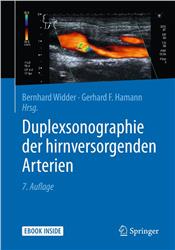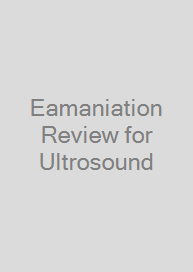Emergency Ultrasound Made Easy
| Auflage | 3/E 2021 |
| Seiten | 256 pp. |
| Verlag | Elsevier |
| ISBN | 9780702081057 |
| Artikel-Nr. | 617194 |
Lieferzeit ca. 2 Wochen
Produktbeschreibung
The use of ultrasound (US) in emergency medicine has proved invaluable in answering very specific, time-critical questions, such as the presence of an abdominal aortic aneurysm, or of blood in the abdomen after trauma. Unlike other imaging modalities (e.g. CT scanning) it is a rapid technique that can be brought to the patient with ease. Increasingly, and especially in developed markets, ultrasound systems are being designed with a specific clinical application in mind.
This book, Emergency Ultrasound Made Easy, is accessible and easy to use in an emergency. It is aimed mainly at specialists and trainees in emergency medicine, surgery and intensive care; but its broad scope (for example using ultrasound in the rapid diagnosis of DVT) makes it an invaluable addition to the library of any doctor with an interest in the technique, whether in primary care or the hospital setting.
A pocket-sized and practical guide to the appropriate use of ultrasound in the emergency department.
Designed to be used in an urgent situation (e.g. a shocked trauma patient).
Written by team of international leading experts.
The Third Edition will include over 200 videos featuring examples of ultrasound in clinical practice.
A new chapter on the use of ultrasound in small anatomical structures such as the eyes and testes.
A new chapter on Paediatric US.?
The Biliary chapter will now include the Gastrointestinal tract (e.g. appendix, bowel obstruction).
The chapter on Early pregnancy will be updated to include Transvaginal scanning.
Nerve blocks will be updated to include Fascial plane blocks.
The chapter on the Abdominal aorta will be updated to include aortic dissection.
The instrumentation will be updated to include the new handheld Butterfly machine and its mechanism.
This book, Emergency Ultrasound Made Easy, is accessible and easy to use in an emergency. It is aimed mainly at specialists and trainees in emergency medicine, surgery and intensive care; but its broad scope (for example using ultrasound in the rapid diagnosis of DVT) makes it an invaluable addition to the library of any doctor with an interest in the technique, whether in primary care or the hospital setting.
A pocket-sized and practical guide to the appropriate use of ultrasound in the emergency department.
Designed to be used in an urgent situation (e.g. a shocked trauma patient).
Written by team of international leading experts.
The Third Edition will include over 200 videos featuring examples of ultrasound in clinical practice.
A new chapter on the use of ultrasound in small anatomical structures such as the eyes and testes.
A new chapter on Paediatric US.?
The Biliary chapter will now include the Gastrointestinal tract (e.g. appendix, bowel obstruction).
The chapter on Early pregnancy will be updated to include Transvaginal scanning.
Nerve blocks will be updated to include Fascial plane blocks.
The chapter on the Abdominal aorta will be updated to include aortic dissection.
The instrumentation will be updated to include the new handheld Butterfly machine and its mechanism.
Fachzeitschriften

Bleiben Sie informiert!
Melden Sie sich für den frohberg.de-Newsletter an und nutzen Sie jetzt Ihre Vorteil:- Willkommens-Dankeschön: Beatmungsmaske Rescue Me
- Aktuelle Neuerscheinungen und Empfehlungen
- Exklusive Angebote und Kongress-Highlights








